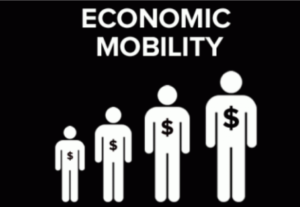 Mark Perry, writing for the American Enterprise Institute, saw many reasons to be optimistic. “The good news is that the key demographic factors that explain differences in household income are not fixed over our lifetimes and are largely under our control,” Perry writes.
Mark Perry, writing for the American Enterprise Institute, saw many reasons to be optimistic. “The good news is that the key demographic factors that explain differences in household income are not fixed over our lifetimes and are largely under our control,” Perry writes.
In other words, earners are not destined to remain in any one particular income bracket. If anything, earners tend to follow a path. The younger and more inexperienced they are, the less they make. As people acquire more skills expertise, their incomes rise, lifting them into different levels of wealth. As people make their way into retirement, incomes naturally shrink as they drop out of the work force.
Certain Gaps Remain
Although this is indeed all good news, there are some nagging inequalities among poor and certain middle class groups. Adjusting for inflation, the average income for men working full-time has actually declined from $54,030 in 1973 to $51,640 in 2016.
African Americans are the only racial group that is economically worse off in 2016 than in 2000, according to the Census Bureau data. The poverty rate within the African American community is still twice that of whites. Even so, African American still incomes rose 6% in 2016.


